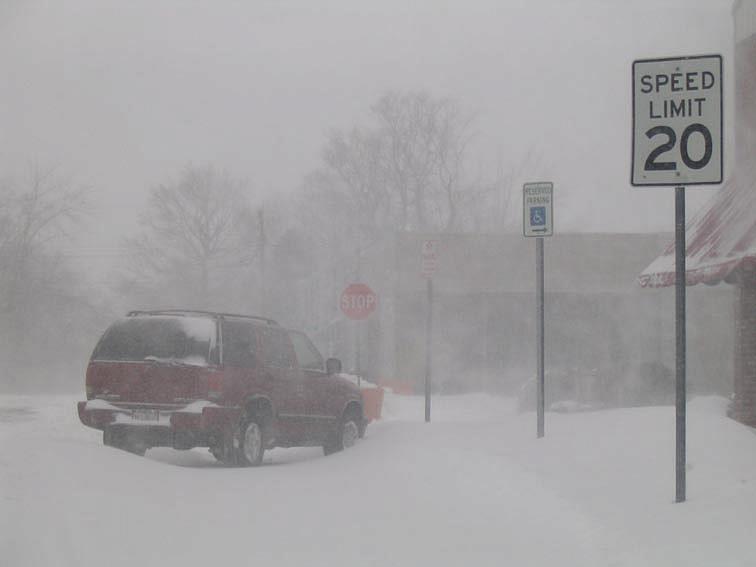Health-care officials rip Gary’s snow response
This story is Part 12 of a 15-part series that examines health care needs in Gary, Ind.
Part 1: Scary ER visits a matter of routine for staff
Part 2: Teaching hospital would fill a need in Gary, region
Part 3: Without a trauma center, NWI out of time on 'golden hour'
Part 4: ER drama offers glimpse into Gary health system
Part 5: High-tech system helps track hospital patients
Part 6: Health reform threatens funding for Methodist
Part 7: State 'missing out' on health funding
Part 8: Woman wins fight against obesity
Part 9: Diabetes 'scared me to death'
Part 10: Methodist financial turnaround 'remarkable'
Part 11: City suffers from chronic shortage of physicians
Part 12: Health-care officials rip Gary's snow response
Part 13: City's history, economic vitality chart course of residents' health
Part 14: Community health centers a safety net for urban populations

GARY — John Grimm knows the city of Gary faces severe financial problems and didn't expect city crews to plow all of its streets overnight after the recent blizzard.
But Grimm, the executive director of the South Shore Health & Rehabilitation Center in Gary, said during and after the storm city leaders failed to protect some of Gary's most vulnerable residents when its crews neglected to plow the alleys and streets surrounding the nursing home.
Grimm said for an entire week the streets around the long-term care facility were not plowed, which he said "put the lives of many residents in jeopardy, as ambulances and emergency medical services and other medical providers were not able to access the facility."
He pointed out that a patient died at the 129-bed home on the day of the big storm Feb. 2, though it was unrelated to the weather.
Neither ambulances nor funeral hearses could get near the nursing home because the streets hadn't been cleared. South Shore staff had to leave the resident's body in a room with an open window until it paid a private contractor more than $1,400 to plow the city streets and alleys surrounding the home.
He said South Shore patients needing regular kidney dialysis treatment were unable to obtain it for days after the storm.
"We also have patients with tracheotomies, respiratory failure, heart failure and strokes," he said. "These are some very sick and vulnerable patients who sometimes have emergencies and need to go to the hospital. Somebody could have died."
He said the city should have an emergency preparedness plan that includes clearing access to healthcare facilities requiring emergency services.
Grimm said he contacted Mayor Rudy Clay's office, which never responded.
"It's absolutely infuriating," he said. "I am accountable to my residents and their families, but the city doesn't even respond to our concerns. It sounds like they just don't care."
He said the city should have given priority to clearing streets around healthcare facilities. "If it was the mayor's mother or aunt and they needed an ambulance that couldn't get in, he would have been really ticked."
Clay did not return calls seeking comment.
Karen Ayersman, administrator for Timberview Health Care Center in Gary, said she knows the city lacks equipment and resources and faced a record blizzard. But Ayersman said the side streets around Timberview were neglected for days.
"Healthcare facilities like ours were not cleared," she said.
She said the private plow trucks her company hired could not even get to the nursing home parking lots to clear them because of the snow-choked streets.
"Finally, we had to pay our own plow trucks to clear Taft Street because the city did not," she said. "Ambulances couldn't get through three feet of snow. It was definitely a problem."
Gary officials said they did their best under trying circumstances. Gary's new Fire Chief Donald Williamson said staff responded to multiple ambulance requests to transport patients to the hospital or dialysis centers and used fire department plows to clear driveways and streets.
"We had fire trucks and ambulances, even police cars, get stuck in the snow," said Williamson. "The fire department worked with the streets department and other city agencies to get help where it was needed. It was a mess. But we kept going and going until the storm ended. After the brunt of the storm passed, the city targeted specific areas and priority went to vulnerable citizens."
Joe Leavy, the city's director of emergency management, said his office tried to clear streets around dialysis centers and at least one nursing home.
"We made sure that major streets and side streets could get ambulances in and out," Leavy said. "The problem was people, many people didn't move their cars and that limited plows to clearing only one lane. That made our jobs very difficult. A lot of people were parking near those nursing homes."
Leavy said even the tow truck drivers towing cars from the streets were getting stuck.
"We tried to do the very best that we could in a terrible situation," he said. "We have an emergency response plan and we tried to take care of the immediately ill. But we had a whole lot of problems. Any plan can be improved. We're all human and we're going to make mistakes, but we'll do a better job the next time."
Gary Police Chief Gary Carter, the city's former emergency management director, said everyone did the best they could under trying circumstances. "I think they did a great job with what they had," Carter said.

